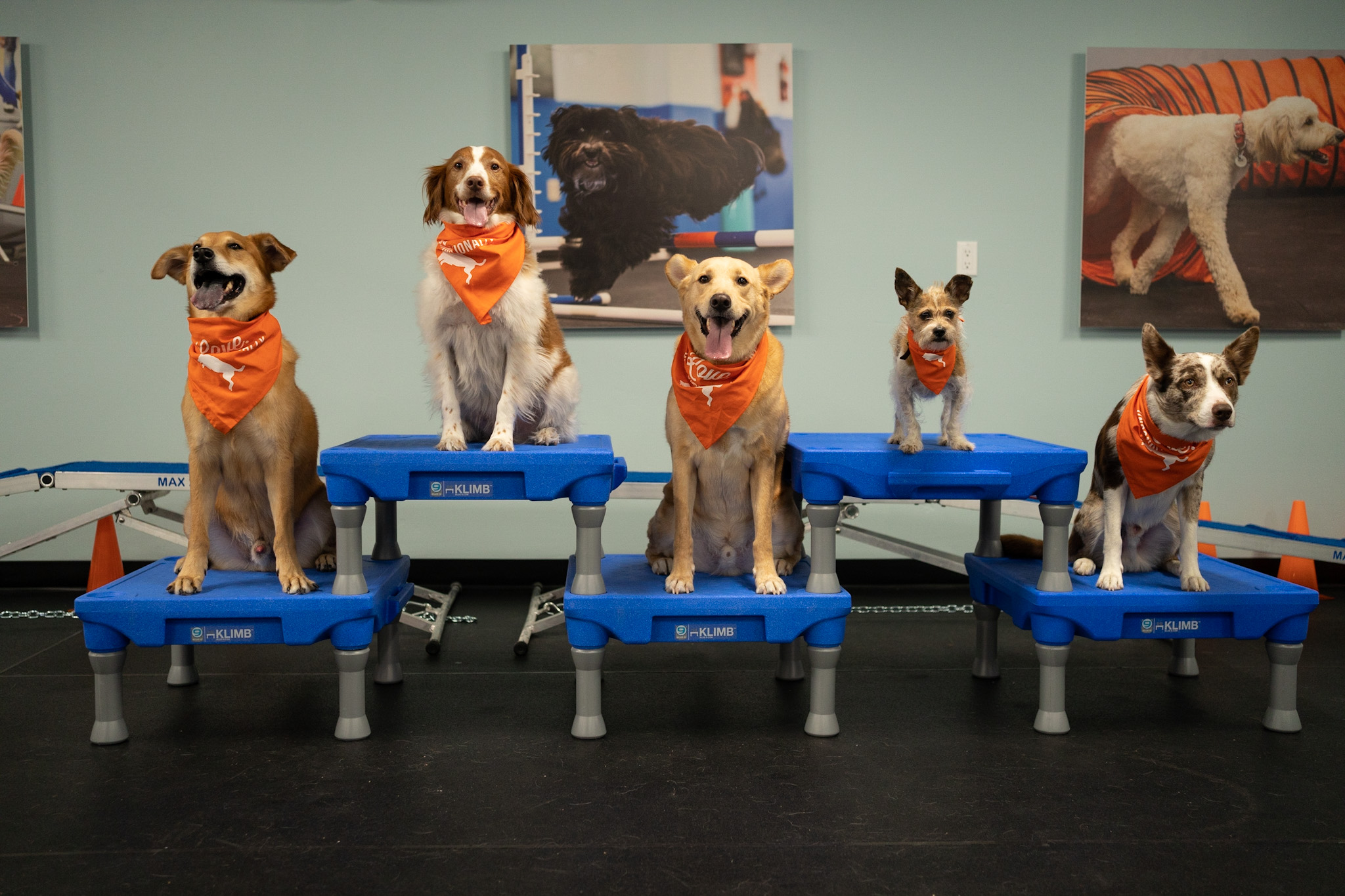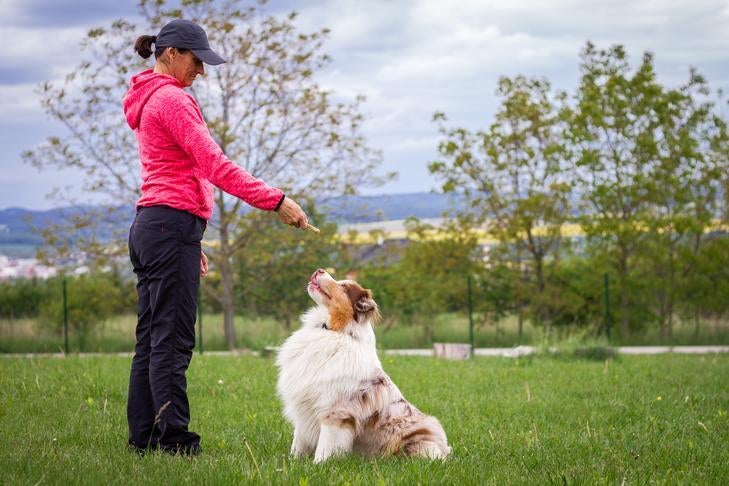Common Mistakes to Avoid During Dog Training for Better Results
Common Mistakes to Avoid During Dog Training for Better Results
Blog Article
Newbie's Overview to Effective Pet Dog Training in your home
Successfully training a canine in the house requires a nuanced understanding of canine actions and efficient communication approaches. Developing clear training objectives, utilizing high-quality rewards, and preserving consistency across member of the family are critical elements. Moreover, integrating training right into everyday routines can improve both engagement and retention. However, lots of newbie trainers come across challenges that might prevent progress. To navigate these complexities effectively, it's necessary to explore several vital aspects that can transform your approach and lead to an unified relationship with your pet. What fundamental principles should every newbie grip to make sure success?
Recognizing Pet Dog Habits
Comprehending dog actions is essential for efficient training and cultivating an unified connection in between humans and their canine companions. Pet dogs connect primarily via body language, vocalizations, and faces, making it critical for owners to translate these signals accurately. Recognizing actions such as tail wagging, grumbling, or trembling can offer understandings right into a canine's emotion and intents.

Usual behavioral problems, such as hostility, stress and anxiety, or excessive barking, typically originate from misconceptions or unmet needs. Observing and dealing with these concerns promptly can stop rise and guarantee a favorable training experience. By fostering a deep understanding of canine actions, proprietors can customize their training techniques to fit their canine buddies, inevitably resulting in a well-behaved and satisfied pet dog.
Crucial Training Devices
A well-appointed training space can dramatically improve the performance of dog training in your home. Crucial training tools ensure that both the pet and the fitness instructor can participate in efficient sessions that promote learning and bonding.

Spending in a sturdy leash and a comfy, well-fitting collar or harness is vital for safety and control. These devices aid establish boundaries and guarantee the dog stays protected during training. Furthermore, a marked training location, totally free from diversions, help focus for both the trainer and the pet dog.
Training aids such as training pads, cones, or dexterity devices can likewise improve the experience by introducing selection and difficulties. Having a note pad or electronic app for tracking progression can be vital, enabling you to keep in mind successes and locations for renovation. Making use of these vital devices will produce a favorable training environment and lay the foundation for efficient knowing.
Producing an Educating Regimen
Developing a regular training regimen is essential for efficient pet training at home. A well-structured regular not just helps in reinforcing wanted behaviors however additionally provides your dog with a complacency and predictability. To develop an efficient training routine, begin by identifying particular training goals, such as standard commands, chain strolling, or house-training.
Pick a designated time each day for training sessions, preferably when your pet dog is responsive and sharp. Sessions needs to be short, approximately 5 to 15 minutes, to preserve emphasis and protect against tiredness. Uniformity in timing and setting will certainly enhance your pet dog's knowing experience.
Incorporate training right into everyday activities to reinforce abilities. Practice commands during strolls or nourishment, which integrates discovering into natural regimens. In addition, continue to be adaptable and readjust the routine as necessary, accommodating your canine's energy levels and state of mind.
Positive Support Methods
Positive reinforcement methods are essential to reliable pet training, advertising preferred habits via rewards instead of penalty. This method makes use of favorable stimulations, such as deals with, appreciation, or playtime, to motivate canines to duplicate particular actions. The foundation of this approach is timing; rewards need to be given promptly adhering to the preferred habits to develop a clear organization.
When carrying out positive reinforcement, it is important to pick rewards that are inspiring for your pet dog. High-value treats, such as small items of hen or cheese, can be specifically effective during training sessions. In addition, differing the rewards can maintain your dog's passion and interest.
Start with straightforward commands, like "rest" or "stay," and progressively development to much more complicated tasks. Consistency is crucial; make sure that all relative make use of the very same commands and incentive systems to avoid confusion.
Furthermore, it is important to see page remain patient and prevent irritation. Pets, like human beings, find out at their own rate. By promoting an encouraging training setting with favorable support, you can improve your pet's learning experience while strengthening the bond in between you and your hairy companion, laying the foundation for successful training end results.
Common Educating Obstacles
While training a dog in the house can be a satisfying experience, it frequently includes a collection of common challenges that can test both patience and uniformity. One prevalent issue is disturbance. Canines might come to be quickly sidetracked by sounds, activities, or even aromas in their setting, making it challenging to maintain their focus during training sessions.
One more challenge is inconsistency in commands and support. It can puzzle the dog and prevent progress if family participants use different signs or benefits. Establishing a unified method is vital for reliable communication.
In addition, pet dogs can experience frustration or stress and anxiety, particularly if they do not comprehend what is anticipated of them. This can bring about unfavorable actions, such as barking or chewing.
Lastly, the timing of reinforcement is critical (Dog training). Delayed rewards can reduce the efficiency of positive support, as pets might fail to connect the actions with the benefit
Getting rid of these obstacles calls for dedication, clear communication, and a structured training plan. Identifying and attending to these common challenges will certainly pave the means for an extra satisfying and successful training experience in your home.
Conclusion
In verdict, effective dog training at home requires a detailed understanding of canine actions and efficient communication strategies. By developing clear training objectives and using high-grade deals with together with positive support, the training process ends up being much more satisfying for both the dog and the instructor.
Developing a regular training regimen is important for reliable pet dog training at home.Favorable reinforcement techniques are essential to efficient dog training, promoting wanted behaviors with benefits rather than penalty (Dog training). By fostering a supportive training environment via positive support, you can improve your pet dog's knowing experience while enhancing the bond in between you and your furry companion, laying the foundation for successful training my link results
In final thought, successful pet training at home demands a comprehensive understanding of canine actions and Learn More effective interaction strategies. By establishing clear training goals and using high-quality deals with alongside favorable reinforcement, the training procedure comes to be extra fulfilling for both the fitness instructor and the dog.
Report this page